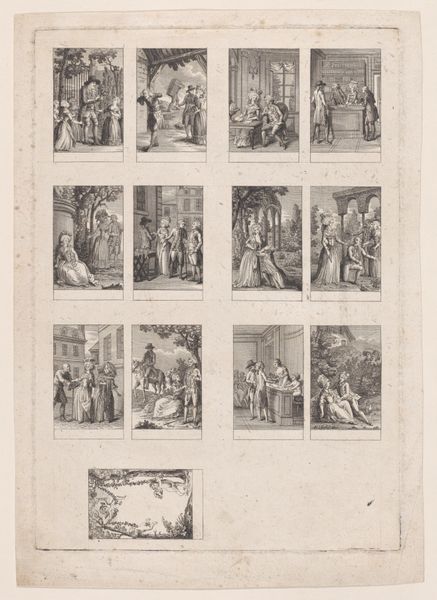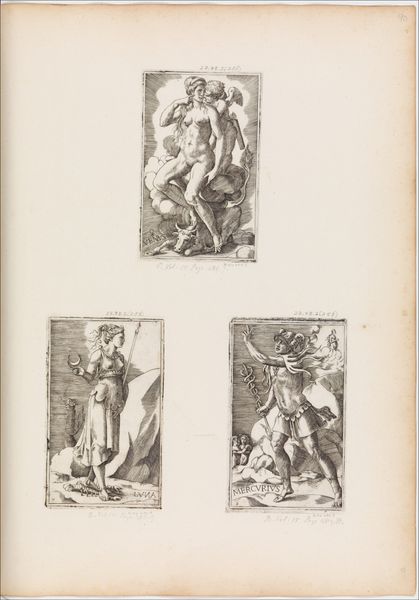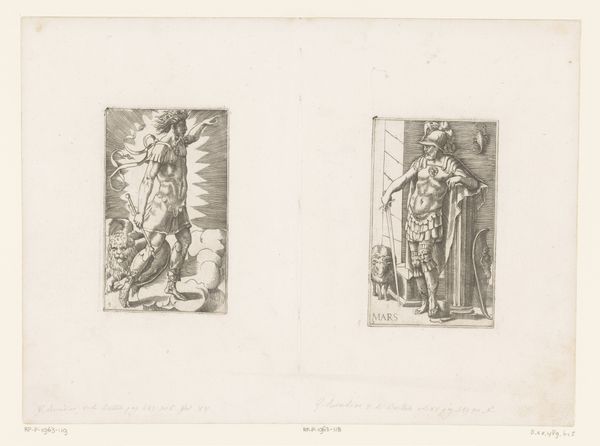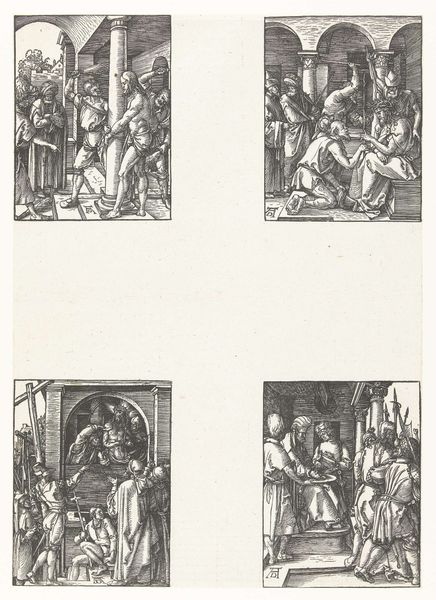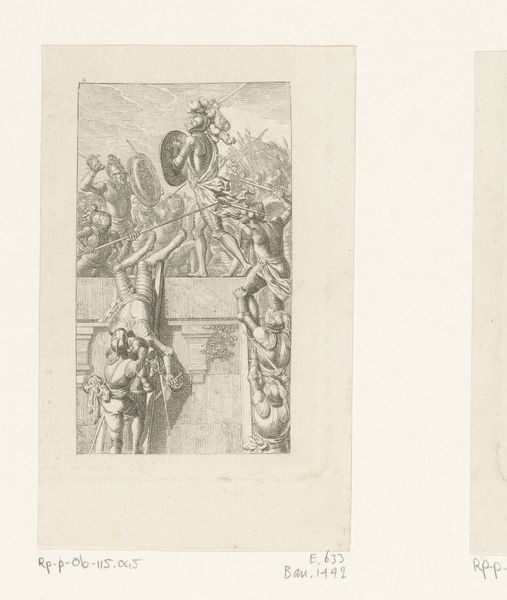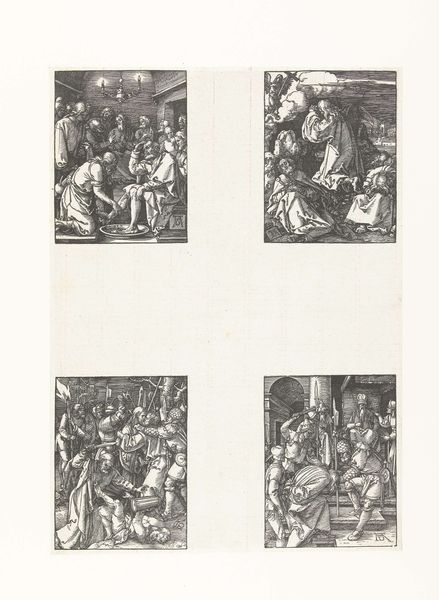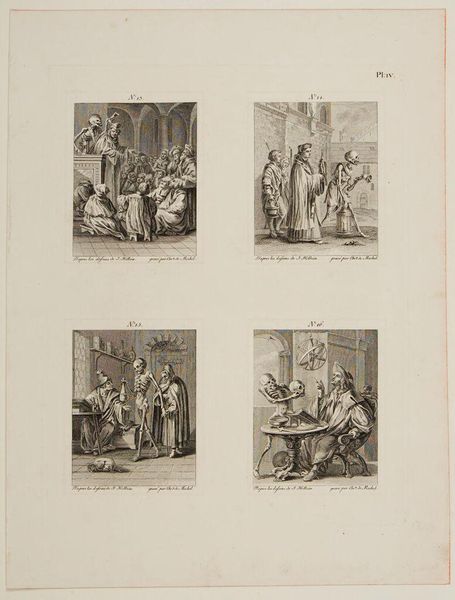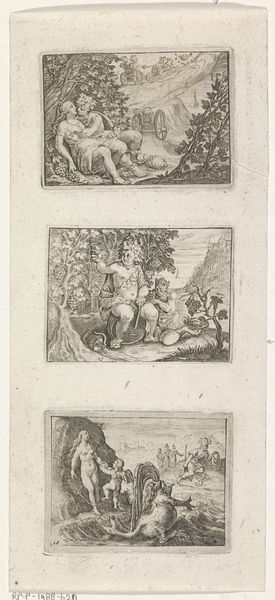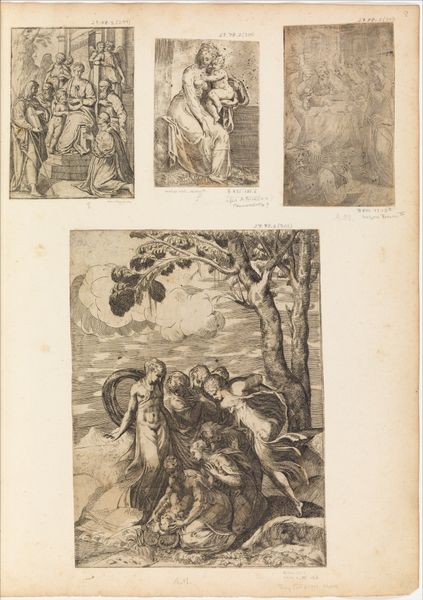
print, engraving
# print
#
figuration
#
11_renaissance
#
history-painting
#
italian-renaissance
#
engraving
Dimensions: height 151 mm, width 92 mm, height 151 mm, width 93 mm, height 150 mm, width 91 mm, height 150 mm, width 91 mm, height 540 mm, width 400 mm
Copyright: Rijks Museum: Open Domain
Curator: This is Giulio Bonasone’s “Luna / Mars / Jupiter / Mercurius,” dating from between 1508 and 1570. The Rijksmuseum holds this Renaissance engraving. What’s your initial take? Editor: It feels...clinical, almost detached. Like anatomical studies of gods instead of celebrations of them. Intricate but lacking a certain spark, you know? A bit cold, perhaps. Curator: The cool precision probably comes from the engraving process. Bonasone would have used burins and other tools to cut lines into a metal plate, then apply ink and transfer it to paper. The lines dictate form, tone, texture... everything. It's very different from, say, painting. Consider the division of labour implied, and the replicability inherent in this method. Editor: Right, and that contrasts sharply with the fluidity you might expect depicting mythical figures. Look at Jupiter’s stance - rigid, like a suit of armor constraining the god within. Almost as if the medium itself imposes limits on the subject, despite being unbound by mortal constraints. It looks really uncomfortable! Curator: Indeed! And it speaks to how the printing trades and their artistic applications sought to portray power at the time. This wasn't a straightforward transfer of mythic grandeur. How would viewers at the time read this replicability and circulation, how might the materials have figured into perceptions of value and ownership? These kinds of printed images disseminated imagery in new ways. Editor: The scale definitely adds to that feeling of detachment. They're tiny, each god constrained in these small boxes. Yet that almost invites closer inspection; each line and flourish holds more detail the longer you look. Makes you wonder what stories each planet would tell about itself... Curator: Precisely! And those material and societal aspects are what give prints like this significance beyond mere reproduction. Editor: I see that, it’s the collision of form and function that shapes how we interpret these renderings centuries later. What I find is, this little dance, a conversation happening between mythology and materials! Curator: A great perspective! Considering the Renaissance context and engraving as a mode of artistic production provides for a very illuminating interpretation.
Comments
No comments
Be the first to comment and join the conversation on the ultimate creative platform.


